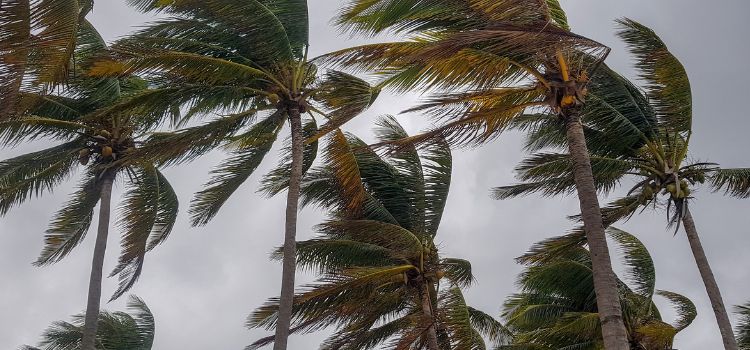Can a hurricane pick you up? The answer is a resounding “yes!” But how is it possible that hurricane winds can pick you up?
Contents
You need to know about Coriolis force, size, and Wind speed. Then, learn about the damages that hurricanes cause. And, remember, if you get caught outside, you might not be able to stay there long. Read on to find out!
What wind speed can pick up a human?
It’s simple: any wind speeds faster than 67 mph should work. But whether you’re able to stand up is another question. You have to be tall or skinny; otherwise, you will fall over or blown away. An adult human weighing about 150 pounds can tolerate a wind speed of about 82 mph (132 km/h) without flurrying around too much — so just about hurricane speed! But a gust of wind blowing can push you over or blow you over.
The Three Aspects Of A Hurricane That Can Pick You Up
Coriolis force
The force is known as the Coriolis effect. Observers are required to account for the force when the Earth is moving. This happens as Earth rotates daily for the day/night cycle. Though the Coriolis force is small compared to other forces, its effects are apparent when the Earth moves with high precision.
For example, airplanes (get a refund if you can!) flying from Anchorage to Miami will encounter this effect during the trip, but this force is much more significant in the case of hurricanes.
Size of a hurricane
The Saffir-Simpson Hurricane Wind Scale rates hurricanes from one to five based on their strength and size. A Category One hurricane can bring wind speeds of 74 to 95 miles per hour. A Category Two hurricane can carry winds of 96 to 110 miles per hour and cause extensive damage. A Category Three hurricane can bring winds of 111 to 129 miles per hour.
Wind speed
When a hurricane hits, the wind can pick you up in a hazardous way. It is essential to avoid walking or standing near exposed edges or difficult underfoot conditions. When walking, the fastest time to get off a hill is the first few hours after the hurricane passes. Winds of 100 mph or higher can damage roofs that are not flat roof hurricane resistant and flip cars. While walking during a hurricane is not recommended, there are ways to protect yourself and your property.
How much weight can a hurricane lift?
The amount of weight that a hurricane can lift is dependant on many factors, such as location, windspeed and size. If a large hurricane was located directly over the ocean it would be able to lift approximately 60 tons per second. This means in the Hurricane of 1938 it lifted over 2 million tons in less than an hour!
However, strong winds over land are much lower than over water, which means a hurricane can lift up to twice as much on water than on dry land. Wind speed plays a huge role in how much weight a hurricane can lift up to.
If the windspeed is between 24-33m/s then there is a lot of force on the structure it is lifting and in the worst case it would be able to lift up to 2.5 tons per second. However, if the wind speed is between 33-47m/s then the windforce is strong enough to lift a Boeing-747, which weighs around 130 tons!
Finally the surface area of the structure also affects the amount of weight that is lifted during a storm surge. A larger structure means that the hurricane can lift more, which in turn means more damage and more destruction.
Also check out – what mph wind can flip a car?
Precautions to take during a hurricane
If you want to prevent getting picked up and blown away during a hurricane, you can go on a food-eating binge and get bigger and heavier. But, this is not a healthy solution!
Instead, there are some precautions you can take, both before and during a hurricane’s arrival:
- Stay indoors. Avoiding the hurricane’s path means you’ll be in a safer position during the ensuing chaos. The same applies for a tornado and tropical storms.
- If you’re in a hurricane’s path, you should immediately head to a sturdy building or an underground basement.
- Avoid staying in the open and uncovered by trees or other structures for safety.
- When hurricanes come during hurricane season, you should avoid walking or standing near exposed edges or difficult underfoot conditions. Walking parts of your property may be dangerous, as well. For example, don’t walk through debris because a broken limb or tree may fall on you unexpectedly. Stay alert and aware of what’s going on around you.

